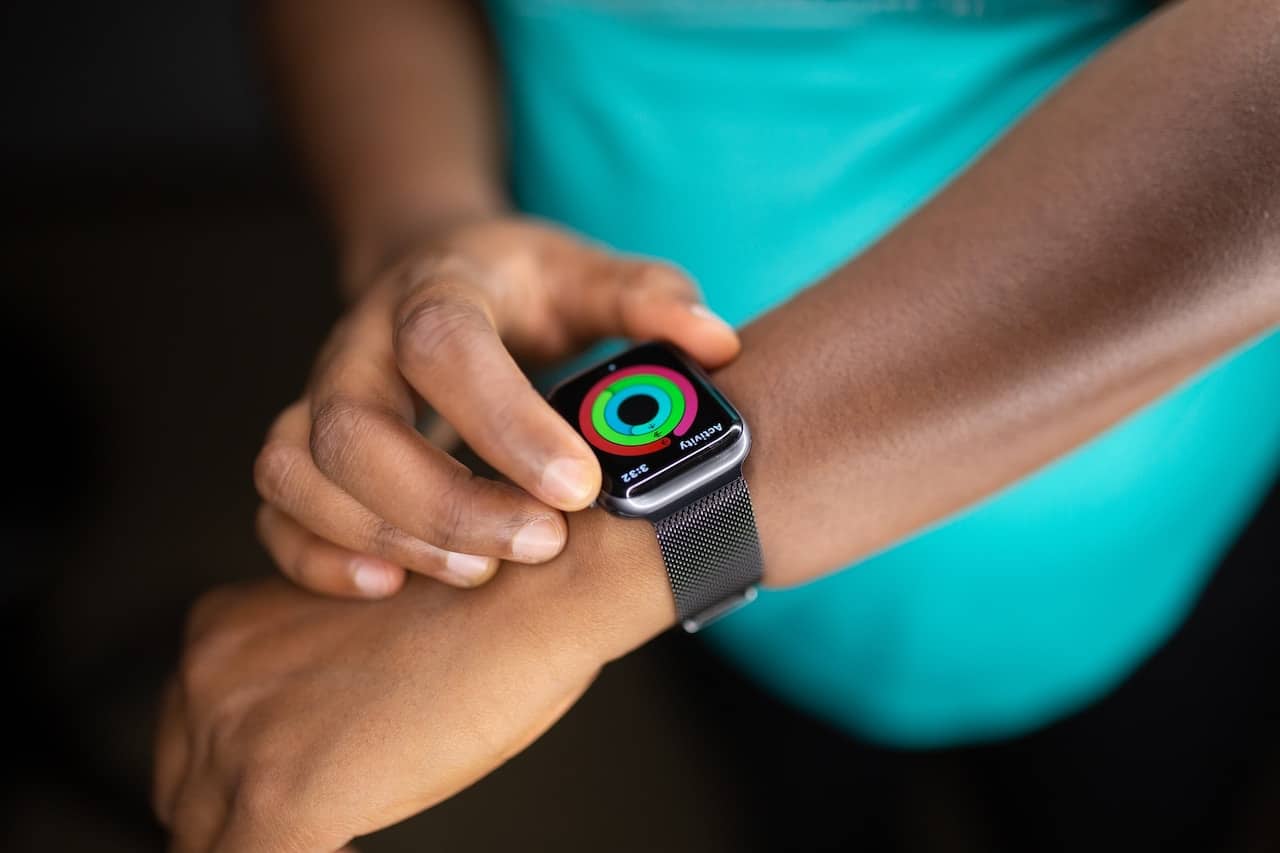In 2022, over 490 million wearable devices were shipped worldwide. Over the past seven years, shipments of wearable devices rose by a staggering 600%.
Despite its recent rise in popularity, wearable technology has been around for almost two decades. Fitbit trackers that can monitor the user’s heart rate first appeared in 2009.
In this article, you will learn from a company with digital health expertise about wearables in healthcare, the challenges that come with them, and which trends might be coming next.
Wearables Today: Types and Underlying Technologies
Devices that track your vital signs and physical activity and then send this data to an app are called wearables. Connectivity technologies such as BLE, GPS, Wi-Fi, and cellular networks enable a data transfer link between your smartphone and a wearable.
Here are the technologies that form the wearables landscape today:
- Artificial intelligence (AI). It allows machines to learn from experience without being programmed by humans. It can help doctors monitor and analyse big data. For example, AI can be used to diagnose diseases such as early-stage cancer or to develop new drugs.
- Smart sensors. They can track biometrics and environmental data such as humidity and temperature. AI algorithms process this data and make suggestions based on the user’s activity such as suggesting cardio training or rest day.
- Wireless communication technologies. Wireless communication allows information from a sensor on one device to be transmitted over Wi-Fi or cellular networks, so it can be shared with another device through an app anywhere in the world through cloud computing technology.
- Cloud computing. Rather than storing data locally, cloud computing allows for remote data processing and storage. It saves time and eliminates the need for every user to have expensive hardware.
The most common wearable devices are:
- Smartwatches. These are watches with additional functionality such as notifications and fitness tracking capabilities.
- Wearable ECG monitors. This type of device measures electrical activity within the body by placing electrodes on the skin surface overlying major arteries or veins. The ECG signal is then transmitted wirelessly to a receiver, so doctors can monitor the patient’s condition remotely.
- Blood pressure monitors. Technologies such as automatic sphygmomanometers work by sending pulses through wires connected directly to the patient’s arms/legs. They help doctors diagnose hypertension by measuring how much force is required for blood flow through an artery at rest.
- Continuous glucose monitors (CGM). They measure blood sugar levels in real-time, enabling users to adjust their treatments. They can also include insulin pumps for type one diabetics. CGM can calculate how much insulin your body needs and pump it when glucose levels rise higher than your target range.
All these technological advancements come with some benefits and challenges though, which we’ll discuss further below.
What Are the Benefits of Wearable Technology in Healthcare?
Three-quarters of people who use wearables say they are useful in tracking their vitals. Studies suggest that wearable technologies could help in fertility tracking, drug effects analysis, treatment of heat-related illness, and psychological interventions because they’re able to collect information frequently about what’s happening inside our bodies.
As the technology continues to evolve, wearable devices will likely have a positive impact on patient outcomes due to:
- Early detection. By proving data such as heart rate variability (HRV), activity levels, and sleep patterns, wearables can help doctors indicate that a patient’s health is deteriorating or improving. For instance, Apple Watch can help detect atrial fibrillation.
- Remote monitoring. Wearables can allow medical professionals to monitor their patients remotely. For instance, they can monitor glucose levels and blood pressure in real time.
- Patient engagement. Research shows that people who use wearables are more health-conscious and interested in improving their well-being.
- Reducing hospital readmissions. Wearables have the potential to reduce avoidable hospital readmissions by providing alerts and reminders that may help prevent adverse events or worsening of conditions.
- Personalized treatment. Wearables can provide doctors with information that might be useful for creating plans tailored specifically towards each individual based on their unique habits, rather than generalizing them into one category. It helps ensure optimal outcomes while minimizing risks associated with side effects caused by over-medicating.
Wearables have great potential to improve the future of healthcare services.
Challenges of Wearable Technology in Healthcare — And How to Overcome Them
If you plan to develop a healthcare solution based on wearables, you should be aware of its main challenges. The most prominent are security concerns, compatibility issues, poor infrastructure, and high costs.
Here are suggestions on how your organization can cope with some of those challenges:
- Establish a well-defined development and regulatory framework early. It will ensure that everyone is doing their job and the process goes as smoothly as possible.
- Adhere to relevant medical devices’ certification requirements and regulations such as those outlined by HIPAA or MHRA.
- Work closely with a device manufacturer to find the best product for your solution.
- Ensure that appropriate training for a new device and solution is in place if you work with staff. That way, you will ensure that your team is able to use the new technologies to their full potential.
In addition, hospitals should establish clear policies regarding how patients may access personal information stored on their devices during visits. It might include requiring visitors to sign agreements stating they will not upload photos onto social media websites while visiting patients’ rooms.
To Sum Up
Despite current limitations for their implementation, wearable devices are already being used by many people worldwide. As wearables become more common over time, you’ll see them being used in hospitals and everyday life even more widely than today.
